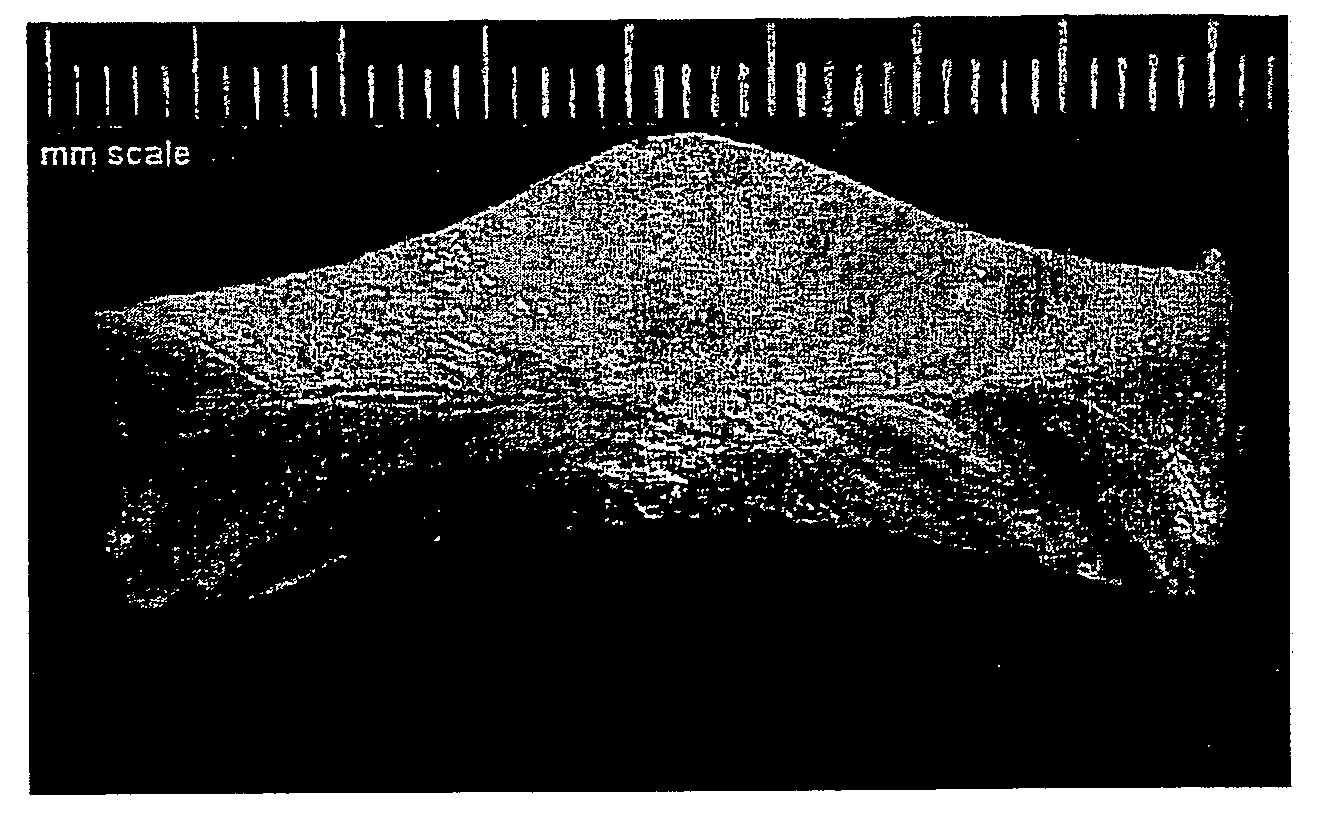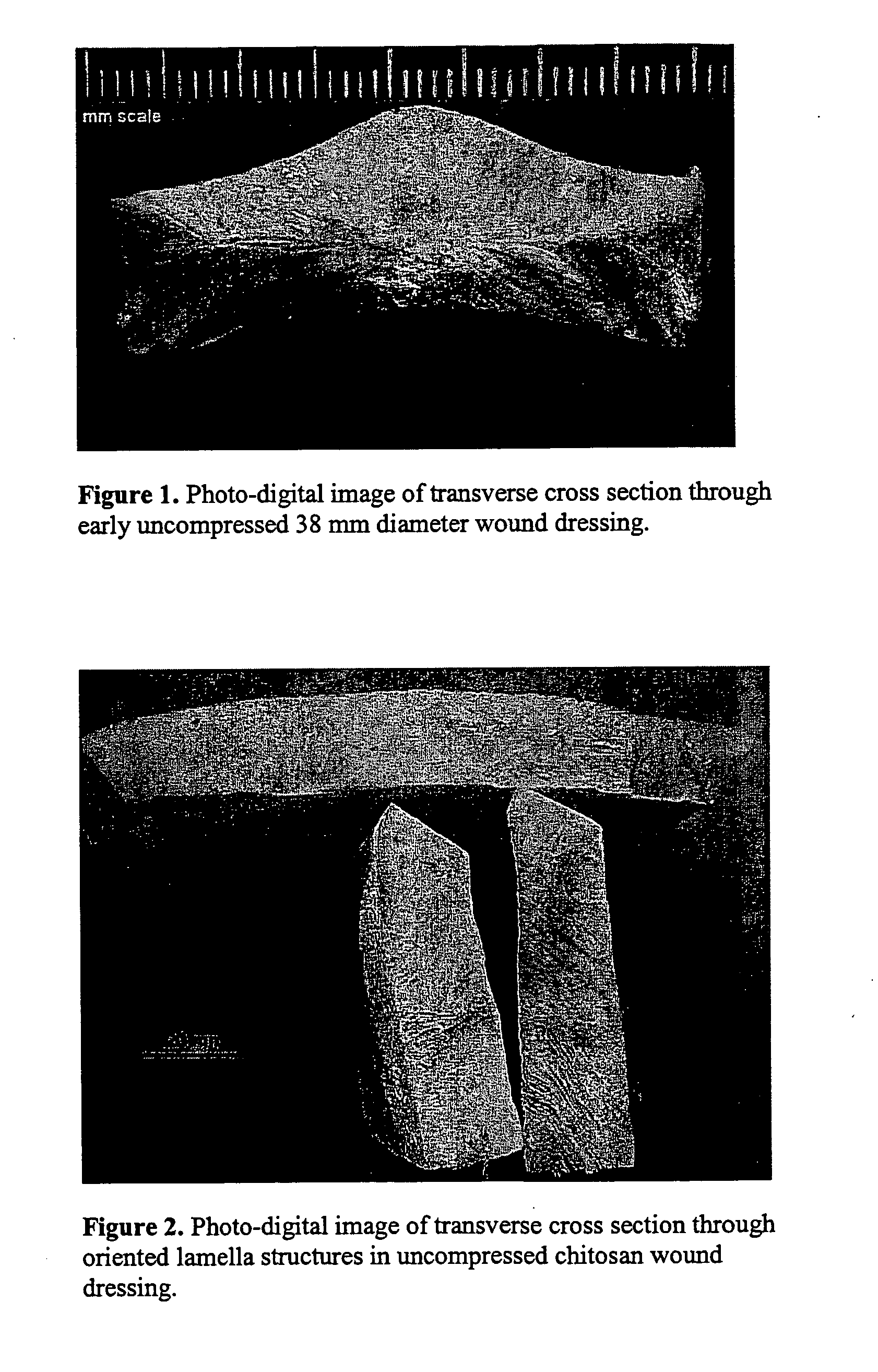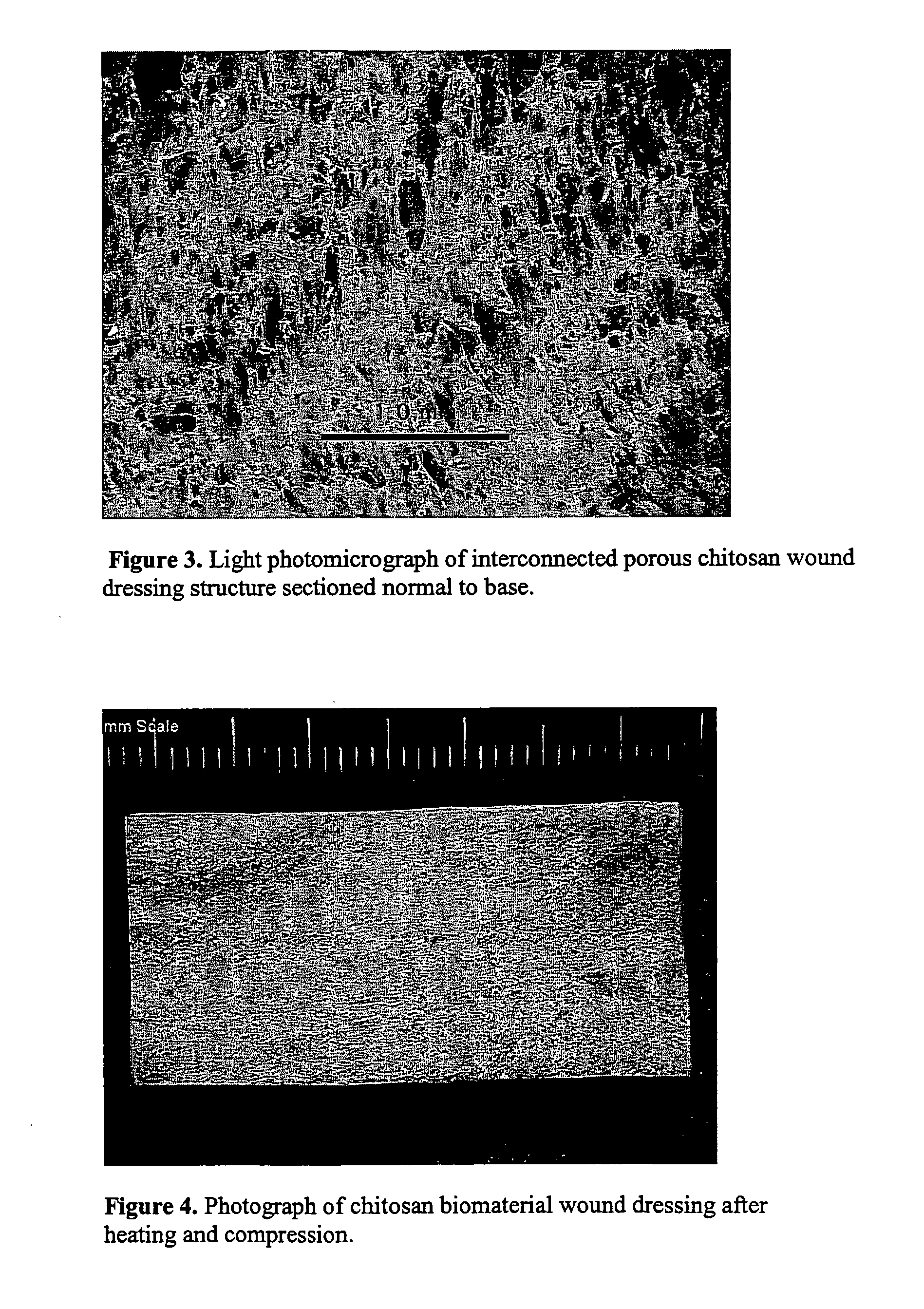Wound dressing and method for controlling severe, life-threatening bleeding
a wound dressing and life-threatening technology, applied in the field of advanced hemorrhage control bandages, can solve the problems of no low-cost wound dressings that address or any wound dressings, bleeding can be fatal in ballistic injuries and severe arterial lacerations, and the person lapsing into a state of hypotension, so as to prevent bleed out, enhance the tensile properties and adhesion properties of wound dressings, and prevent bleeding. , the effect of preventing bleed ou
- Summary
- Abstract
- Description
- Claims
- Application Information
AI Technical Summary
Benefits of technology
Problems solved by technology
Method used
Image
Examples
Embodiment Construction
Table 1 provides a list of the main chitosan materials acquired for hemorrhage control testing. With the exception of the Gelfoam™+thrombin, and Surgicel™ controls for swine spleen experinents and the Johnson and Johnson 4″×4″ gauze control for use in swine aortic perforations, the dressing materials were all chitosan-based.
Aqueous solutions (2.00% w / w) were prepared in clean, sterile, 1 liter Pyrex flasks from Ametek UF water and dry chitosan. In the case of the Carbomer, Primex and Genis chitosan materials, 1.0% or 2.0% w / w of glacial acetic acid (Aldrich 99.99%) was added to the aqueous mixtures. Dissolution was achieved by shaking of the flask at 40° C. for 12 to 48 hours. The solutions were degassed by application of vacuum at 500 mTorr at room temperature immediately prior to freezing.
Wound dressings were prepared from the 2% aqueous solutions of chitosan that were poured into Teflon™-coated aluminum or polystyrene molds to at least 1.5 cm deep and frozen in a −80° C. Rev...
PUM
| Property | Measurement | Unit |
|---|---|---|
| systolic blood pressure | aaaaa | aaaaa |
| volume | aaaaa | aaaaa |
| elongation | aaaaa | aaaaa |
Abstract
Description
Claims
Application Information
 Login to View More
Login to View More - R&D
- Intellectual Property
- Life Sciences
- Materials
- Tech Scout
- Unparalleled Data Quality
- Higher Quality Content
- 60% Fewer Hallucinations
Browse by: Latest US Patents, China's latest patents, Technical Efficacy Thesaurus, Application Domain, Technology Topic, Popular Technical Reports.
© 2025 PatSnap. All rights reserved.Legal|Privacy policy|Modern Slavery Act Transparency Statement|Sitemap|About US| Contact US: help@patsnap.com



